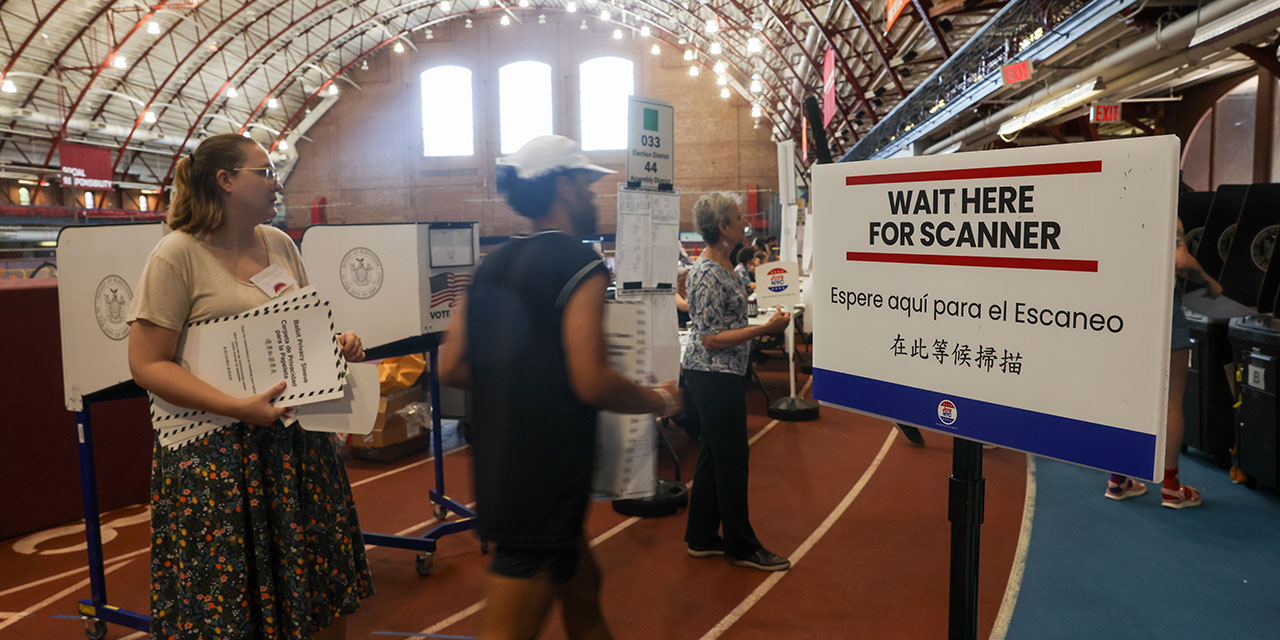The Bush administration, federal regulators, and major investment banks are “aggressively pursuing,” in the words of treasury secretary Henry Paulson, a plan to save some mortgage borrowers and their lenders from the consequences of their bad decisions. The deal is called “Hope Now.” It should be subtitled: “Worry Later.”
Part of the pact likely will call for mortgage lenders and their agents—including teetering mortgage giant Countrywide Financial and tottering financial-services giant Citigroup—to change the terms of, potentially, more than $100 billion worth of mortgages that they approved for home buyers over the past few years. In those cases, borrowers, often those who couldn’t afford high monthly mortgage payments or who didn’t have much money for down payments, took on mortgages that carried initial “teaser” interest rates. That is, instead of signing mortgages that required the same monthly payment for 30 years, the borrowers agreed to pay a super-low rate for one or two years, and then to pay a much higher one for the remaining 28 or 29 years. Investment banks then packaged and sold huge bundles of these mortgages to outside bond investors, providing the original lenders with more money to make more such loans.
Finally, a reason to check your email.
Sign up for our free newsletter today.
For these deals to work after the teaser rates expired, the housing market could never falter, because few borrowers could afford the new, higher rates that they would have to pay in a few years. Both the borrowers and the lenders understood this risk, or should have, but they ignored it. They assumed that when the teaser rate came close to expiration, the borrower could simply refinance his loan, taking out a new mortgage with a similar teaser rate—which would buy more time for the borrower and also provide new fees to mortgage lenders and brokers. This scenario collapsed when the housing market started to decline, because a borrower can’t refinance a mortgage loan if his home is worth less than the amount of money he already owes.
Now the Bush administration and the markets are terrified, because they know that nearly half a trillion dollars’ worth of these “adjustable-rate, subprime mortgages” will “reset” over the next year, triggering the higher rates. If a borrower can’t pay the rate and can’t refinance his loan, the normal procedure—under the terms of the agreement that he signed with his lender—calls for the lender’s agent to take possession of the home, writing off the loss and selling the home to another buyer.
But Paulson is devising an escape from this harsh reality. Under his plan, banks and investors will agree to keep the teaser mortgage rates in place, likely for several years, for borrowers who can afford those rates but not the higher “reset” ones. (Hope Now won’t cover all struggling subprime borrowers, though, since many borrowers can’t even afford their starter payments, as high default rates for such mortgages approved in the past two years show.) Paulson’s program is somewhat analogous to the price fixing that economically illiterate governments do to stop inflation—only in this case, the government is fixing rates rather than prices.
The Paulson plan’s flaws are manifold—and fatal. First, it will reward and encourage irrational behavior by future home buyers. It wasn’t logical for people to take on mortgage obligations that they couldn’t afford, but it will become logical in the future if they can reasonably expect that the government and their lenders will bail them out when the going gets tough.
Second, the deal will thwart the market by keeping home prices artificially high. In recent years, laughably easy credit has allowed many people to “buy” homes who otherwise couldn’t have. We’ve had “liar” loans, in which people could claim a false annual income without fear that their mortgage lenders would confirm the figure. We’ve had “Nina” loans (short for “No Income, No Assets”). And we’ve had “Ninja” loans, for “No Income, No Job or Assets.” Consumers, armed with the easy money provided by these lenient arrangements, have pushed home prices to record levels as measured against personal income. The decline of home prices, then, was both inevitable and healthy. But Hope Now, by placing an artificial floor under home prices, will penalize first-time buyers who did the right thing: not taking out mortgages that they knew they couldn’t afford, but renting instead until prices fell and they could afford homes with more conventional mortgages.
Third, the deal may hurt some borrowers it was meant to help, by encouraging homeowners who can barely afford their teaser rates to continue making those monthly payments in the hope that the property market will recover quickly and allow them to sell their homes. If that doesn’t happen, they’ll be right back where they started in a few years. While it would cause them short-term pain, they’d likely be better off losing their houses and renting cheaper homes. They could then regroup, save money, and rebuild their credit to buy an affordable property, with a more conventional mortgage, a few years down the road.
Fourth, the deal will allow investors in these mortgage securities and participants in the housing market to delay new pain, beyond what they’ve already experienced. America’s economy is successful, in part, because of its efficient markets. Companies and investors periodically screw up, sometimes disastrously, but when they do, they have to take their punishment in the market so that everyone can move on to the next big thing. Hope Now would allow investors instead to push today’s losses off to the future, implicitly assuming that the housing market will resume its formerly unsustainable rise and solve lenders’ and borrowers’ problems for them. It would also discourage new investors from diving into the housing market soon, helping the market find its level, because they’ll know that the feds have kicked the problem down the road. It’s similar to how Japanese government officials and regulators encouraged banks to keep bad loans on the books during that country’s economic malaise. They succeeded only in prolonging Japan’s stagnation.
Fifth, the deal essentially calls for banks and mortgage investors to rewrite billions of dollars in private-investment contracts under government pressure. It’s likely, for example, that banks that have actively approved or underwritten subprime mortgages feel an implicit threat from the government. They fear that both the feds and state attorneys-general will go after them for supposedly using aggressive sales tactics with weak, vulnerable, and often minority mortgage borrowers—unless they provide some extracontractual relief to those borrowers now. If not for this pressure, investors in bank stocks and in mortgage securities would be better off foreclosing, taking their losses, and getting it over with. The broader economy, too, would benefit.
Sixth—and most important—Paulson’s mortgage mulligan will permanently alter investors’ perception of the risk of government interference in the American credit markets. Investors bought mortgage-backed securities because they hoped to make money through the higher interest rate they expected in future years, or from the extra fees that borrowers would pay as they refinanced to escape those higher interest rates. The risk they undertook—lending money to less-than-stellar borrowers—was market risk, not political risk. Now, though, a Republican president seems willing to endorse mass-scale interference in the private markets. This bodes poorly for future interest rates on all American consumer financing—including mortgages—because investors will see that the political risk is far greater than they had thought.



